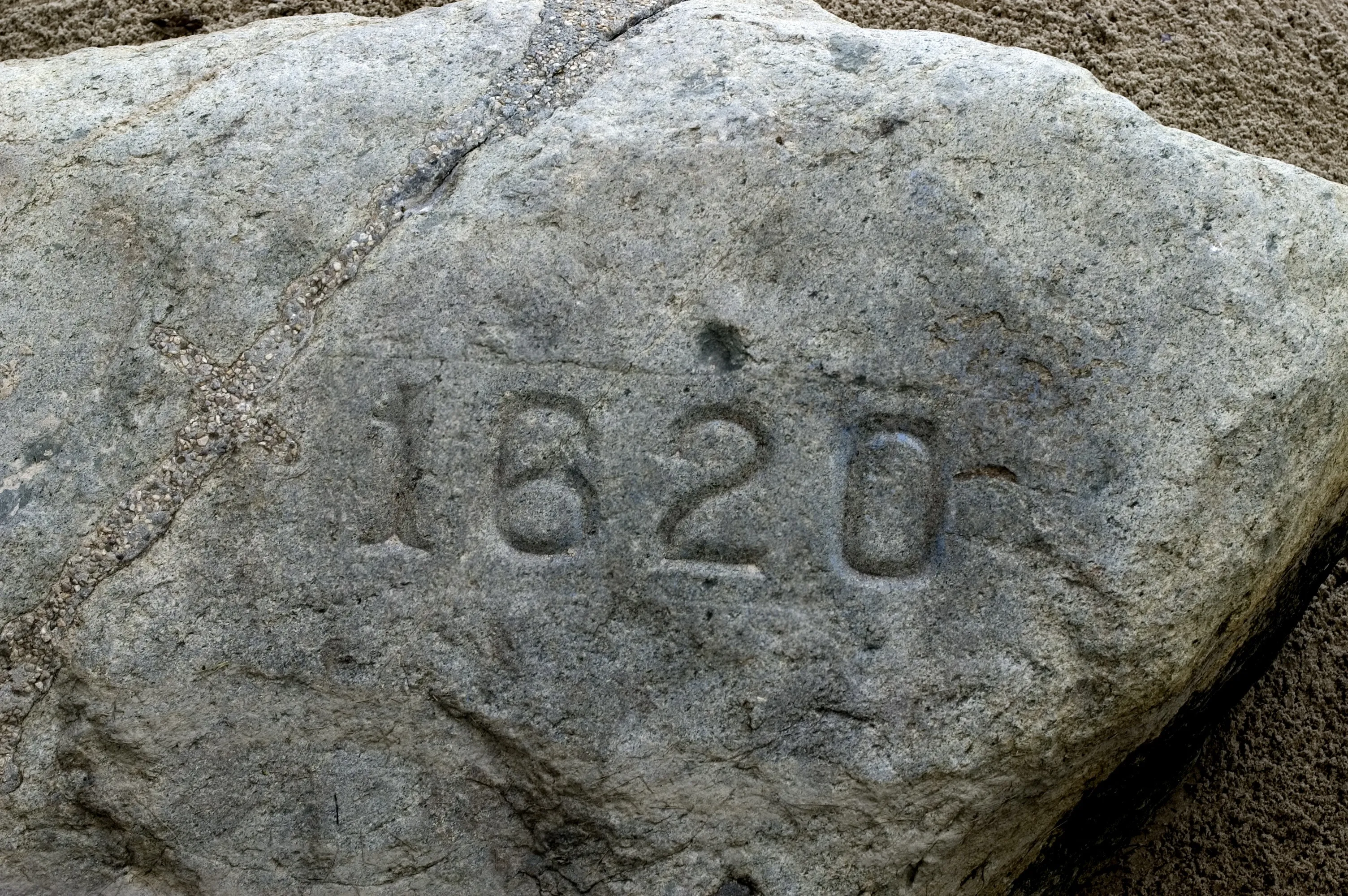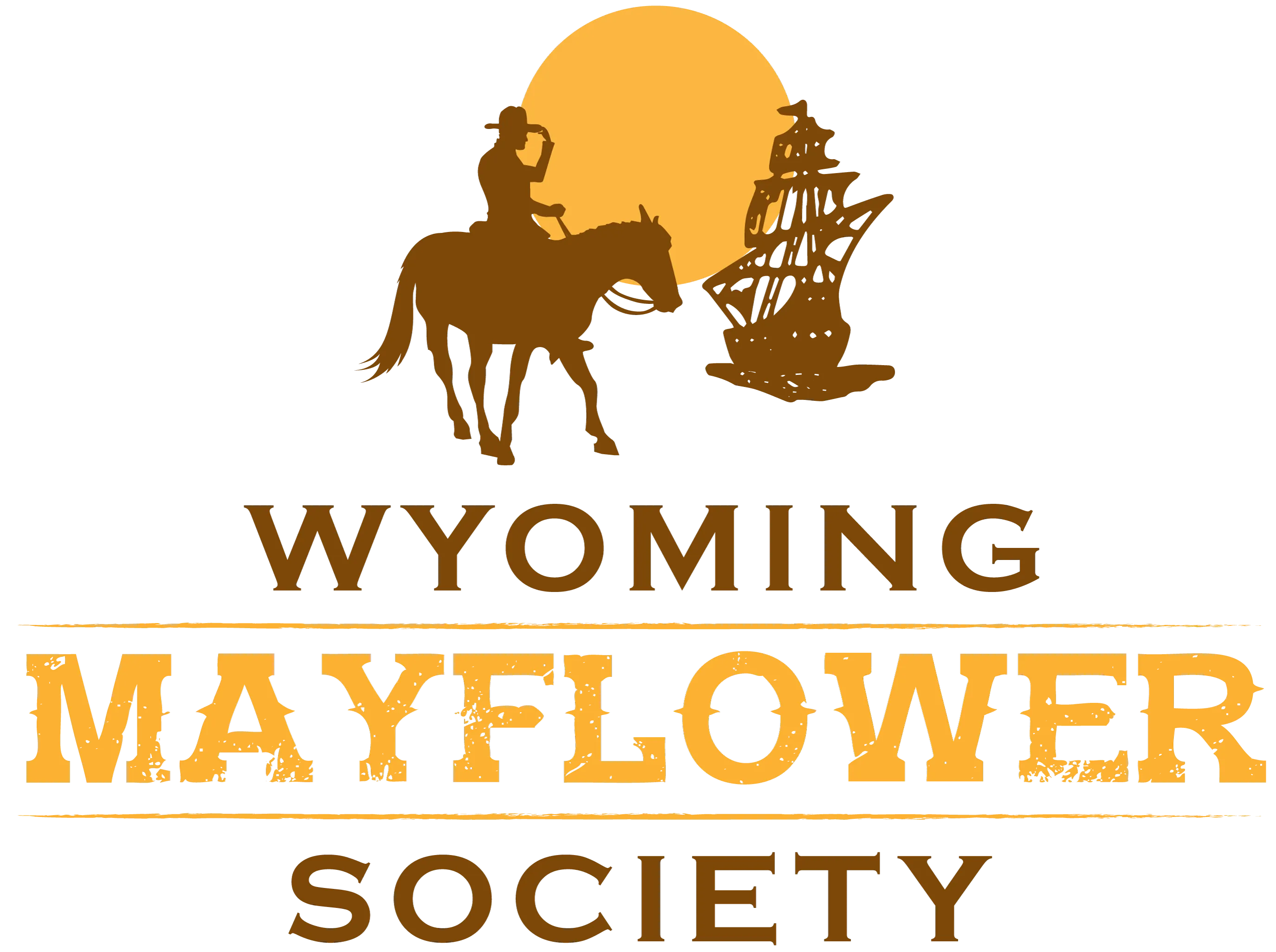The Mayflower Pilgrims
Following is a list of Mayflower passengers with known descendants. If you can trace your family history directly from one or more of these passengers, we invite you to join the Wyoming Mayflower Society!
Passengers with Descendants
John Alden
Bartholomew Allerton
Isaac Allerton
Mary (Norris) Allerton
Mary Allerton
Remember Allerton
Elinor Billington
Francis Billington
John Billington
William Bradford
Love Brewster
Mary Brewster
William Brewster
Peter Browne
James Chilton
Mrs. James Chilton
Mary Chilton
Francis Cooke
John Cooke
Edward Doty
Francis Eaton
Samuel Eaton
Sarah Eaton
Moses Fletcher
Edward Fuller
Mrs. Edward Fuller
Samuel Fuller
Samuel Fuller (son of Edward)
Constance Hopkins
Stephen Hopkins
John Howland
Richard More
Priscilla Mullins
William Mullins
Degory Priest
Joseph Rogers
Thomas Rogers
Henry Samson
George Soule
Myles Standish
Elizabeth Tilley
John Tilley
Joan (Hurst) Tilley
Richard Warren
Peregrine White
Resolved White
Susanna White
William White
Edward Winslow

The Mayflower Compact
IN THE NAME OF GOD, AMEN. We, whose names are underwritten, the Loyal Subjects of our dread Sovereign Lord King James, by the Grace of God, of Great Britain, France, and Ireland, King, Defender of the Faith, &c. Having undertaken for the Glory of God, and Advancement of the Christian Faith, and the Honour of our King and Country, a Voyage to plant the first Colony in the northern Parts of Virginia; Do by these Presents, solemnly and mutually, in the Presence of God and one another, covenant and combine ourselves together into a civil Body Politick, for our better Ordering and Preservation, and Furtherance of the Ends aforesaid: And by Virtue hereof do enact, constitute, and frame, such just and equal Laws, Ordinances, Acts, Constitutions, and Officers, from time to time, as shall be thought most meet and convenient f the general Good of the Colony; unto which we promise all due Submission and Obedience.
IN WITNESS whereof we have hereunto subscribed our names at Cape-Cod the eleventh of November, in the Reign of our Sovereign Lord King James, of England, France, and Ireland, the eighteenth, and of Scotland the fifty-fourth, Anno Domini; 1620.or
John Carver
William Bradford
Edward Winslow
William Brewster
Isaac Allerton
Myles Standish
John Alden
John Turner
Francis Eaton
James Chilton
John Craxton
John Billington
Moses Fletcher
John Goodman
Samuel Fuller
Christopher Martin
William Mullins
William White
Richard Warren
John Howland
Stephen Hopkins
History of the Mayflower Compact
"The document now referred to as the Mayflower Compact was written and signed by most of the male passengers on the ship in November 1620 as they landed at Cape Cod. In his history, William Bradford recounts the event as “a combination made by them before they came ashore; being the first foundation of their government in this place.”
In 1620, “Virginia” extended far beyond its current boundaries and the Mayflower was originally meant to land at its “northern Parts,” specifically the Hudson River. When the Mayflower attempted to sail around Cape Cod to reach the Hudson, contrary winds and dangerous shoals forced the ship to turn around and instead anchor in modern day Provincetown Harbor on November 11, 1620.
English colonies at the time required “patents” – documents granted by the king or authorized companies which gave permission to settle at a particular place. Since the Mayflower passengers had obtained a patent for Virginia, when they instead landed in New England this patent was no longer valid. Any sort of authority the group’s leaders could have derived from this patent was therefore also suspect, and some passengers threatened that “when they came ashore they would use their own liberty, for none had power to command them, the patent they had being for Virginia and not for New England” (Bradford).
These “mutinous speeches” from some of the passengers lead to the creation of the “association and agreement” to “combine together in one body” that we now call the Mayflower Compact (Bradford, Mourt’s Relation). Published in 1622, Mourt’s Relation, which details the beginnings of Plimoth, continues on to say that under this agreement the colonists would “submit to such government and governors as we should by common consent agree to make and choose.” Likewise, William Bradford writes that in lieu of their original patent, the Mayflower Compact “might be as firm as any patent, and in some respects more sure.”
Localized governments were not unheard of in England at the time, but the “civic body politic” created by the Mayflower Compact was called upon to do much more than a similar body would back in England. Due to the distance between the Pilgrims and the centralized English government, ordinary men found themselves in leadership positions they wouldn’t have otherwise held. John Robinson, the pastor of the Seperatist congregation to which many of the Pilgrims belonged, advised them that since they were “not furnished with any persons of special eminency above the rest” they would need to make prudent decisions when choosing leaders. Robinson counselled the Pilgrims to choose as leaders those who “diligently promote the common good,” and not to begrudge “in them the ordinariness of their persons, but God’s ordinance for your good” (Mourt’s Relation).
The influence of the Mayflower Compact has far outlasted and outgrown the Pilgrims’ original intent. Legally, it was superseded when the Pilgrims obtained a patent from the Council of New England for their settlement at Plimoth in 1621. However, the Compact had already gained symbolic importance in the Pilgrims’ lifetimes, as it was considered important enough to be read at government meetings in Plimoth Colony for many years.
Today, local governments similar to the one created by the Mayflower Compact can be found throughout America. Plimoth Colony held a yearly election court, where the men gathered would vote for the town’s governor and his assistants, as well as discuss pertinent town business.
The document was not titled initially but, over time, became known as the “Mayflower Compact.” The original document has been lost, but a copy was published in 1622 in Mourt’s Relation by Edward Winslow and in William Bradford’s Of Plymoth Plantation. In 1669 Nathaniel Morton published it and included the names of the signers. The document was brought out to be read publicly at government meetings in Plymouth Colony several times a year."
*Source: General Society of Mayflower Descendants; www.TheMayflowerSociety.org

